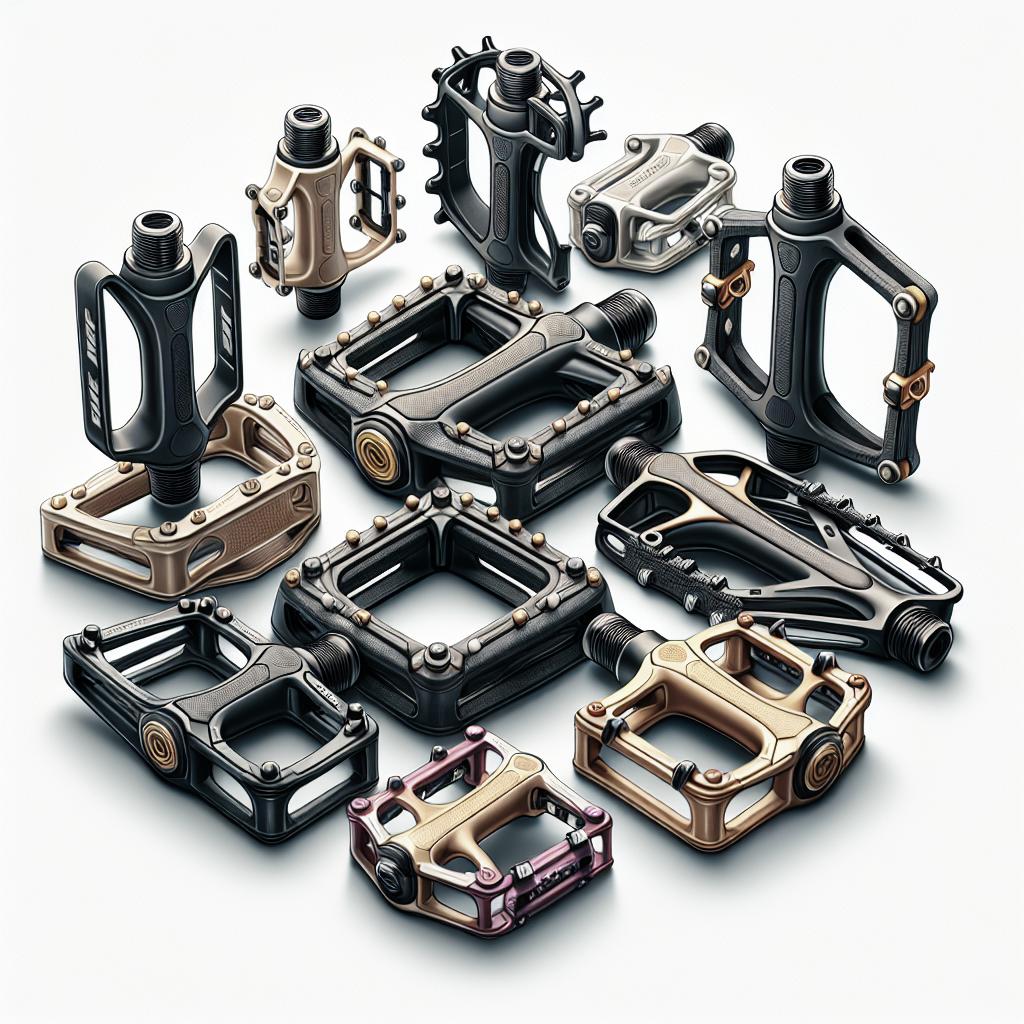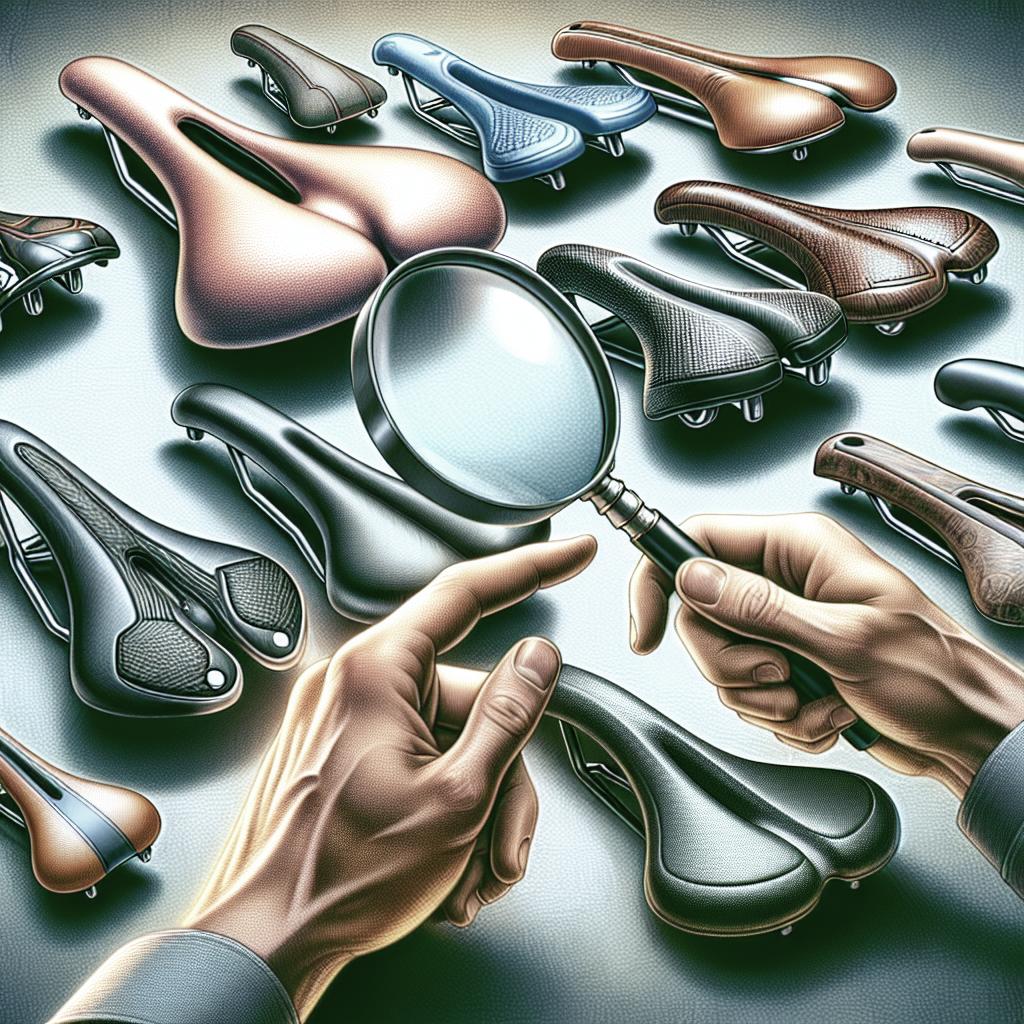“`html
Choosing the Right Bike Pedals for Your Needs
When it comes to cycling, selecting the right bike pedals is as crucial as choosing the bike itself. This comprehensive guide explores different types of bike pedals, including clipless, flat, and hybrid options, each offering unique benefits tailored to specific biking activities. Whether you’re navigating rugged mountain paths, commuting in the city, or training for road races, your choice of pedals impacts your performance and comfort. Here, we’ll delve into the features of various pedals, help you understand their suitability for different riding styles, and offer tips on pedal maintenance and choosing appropriate cycling shoes. Ultimately, this guide aims to equip you with all the necessary information to make an informed decision about which bike pedals best suit your needs and riding preferences.
Clipless, Flat, or Hybrid Pedals
What are the benefits of clipless pedals?
Clipless pedals, despite the misleading name, attach securely to cleats on the bottom of specific cycling shoes, allowing a direct connection between your foot and the bike. This setup enhances efficiency by enabling a powerful upward and downward pedal stroke, perfect for speed and endurance, especially on road bikes. Competitive cyclists and enthusiasts often prefer clipless pedals for the seamless energy transfer they provide, optimizing performance on long rides.
Furthermore, clipless pedals offer improved control and stability, critical when navigating sharp corners or rough terrain. The secure attachment reduces the chance of slippage, giving cyclists the confidence to push their limits. As a result, clipless pedals are ideal for both road racing and mountain biking, where precision and power are essential.
What are the benefits of flat pedals?
Flat pedals are the go-to choice for many types of cyclists, from beginners to extreme mountain bikers. Their primary advantage is versatility, as they accommodate any shoe type, offering convenience for casual and commuter cyclists. Without needing specialized shoes, riders can easily hop on their bikes for short trips or errands without changing footwear.
Additionally, flat pedals provide a broader platform that some cyclists find more comfortable and easier to maneuver. This feature is particularly beneficial for mountain biking where frequent stops and quick dismounts might be necessary. The larger surface area also offers added stability, enhancing confidence on tricky terrains, making them a perfect option for those who prioritize comfort and ease over performance.
What are the benefits of hybrid pedals?
Hybrid pedals offer a compromise between the two other types, featuring a flat pedal on one side and a clipless system on the other. This dual functionality allows cyclists to easily switch their riding style based on the situation. Perfect for those who encounter varied terrains and circumstances on their rides, hybrid pedals can accommodate both casual and performance-focused cycling with ease.
Moreover, hybrid pedals are excellent for cyclists making the transition from flat to clipless pedals. They provide the security and efficiency of clipless pedals while retaining the simplicity and accessibility of flat pedals. This versatility is particularly appealing for commuters who might wear cycling shoes for longer rides and regular shoes for shorter trips.
Clipless Pedal Features
Mountain Bike Pedals
Mountain bike pedals are designed to withstand rugged terrains and demanding environments. They boast a robust build and usually feature a double-sided entry, which allows for quick and easy engagement, crucial when navigating tricky trails. This feature is essential for maintaining momentum over obstacles and during steep climbs.
These pedals often come with a mud-shedding design, which is invaluable when riding through muddy or wet conditions. The ability to stay clear of debris ensures a reliable clip-in/out action, enhancing performance and safety for mountain bikers who often ride in unpredictable surroundings.
Road Bike Pedals
Road bike pedals prioritize weight reduction and aerodynamic design, suited for long distances and high-speed endeavors. Typically, these pedals are single-sided and require a specific shoe and cleat system to maximize power transfer and efficiency. The seamless connection between shoe and pedal aids in maintaining a smooth and powerful pedal stroke on long road rides.
Additionally, road bike pedals are built for rigidity and durability, ensuring that they can withstand the repetitive stresses of cycling over long distances. This focus on performance often makes them the first choice for serious cyclists engaging in competitive or endurance cycling events.
Recreation and Commuter Bike Pedals
Designed for comfort and ease of use, pedals for recreation and commuter bikes emphasize convenience rather than performance. These pedals often feature a simple design that allows quick entry and exit without needing specialized cycling shoes or equipment, catering to everyday cyclists who prioritize functionality and simplicity.
The user-friendly design is particularly suited for urban environments where frequent stops and starts necessitate an easy foot release. Many commuters appreciate the stress-free disengagement that these pedals offer, ensuring a smooth ride while navigating city streets and traffic.
Gravel Bike Pedals
Gravel bike pedals combine features from both road and mountain biking for a versatile riding experience on mixed terrain. Their design focuses on durability and adaptability, often featuring a system that efficiently deals with dirt and debris, essential for the off-road segments of gravel riding.
Moreover, these pedals are crafted for the unpredictable and varied conditions of gravel biking. Riders benefit from their ability to provide secure foot engagement alongside the flexibility needed to tackle different surfaces, enhancing both safety and performance on challenging rides.
Flat Pedal Features
Flat pedals are characterized by their wide and stable platforms, designed to provide comfort and control across diverse cycling activities. The extensive surface area helps to distribute weight evenly, which can alleviate pressure on the rider’s foot, making long rides more enjoyable.
Furthermore, flat pedals often include traction pins or textured surfaces that enhance grip between the foot and the pedal, reducing the risk of slipping. This gripping capability is crucial for maintaining stability and control, especially in off-road biking scenarios where unexpected movements are common.
Another feature of flat pedals is their adaptability to any footwear, eliminating the need for specialized bike shoes. This convenience is appealing to many cyclists who prefer impromptu rides or need to transition between biking and other daily activities seamlessly.
Choose your style of riding
The type of riding you engage in significantly influences your choice of pedals. For instance, road cyclists aiming for performance might opt for clipless pedals to maximize efficiency and power transfer. The secure attachment aids in achieving a smoother, faster ride, essential for competitive environments.
In contrast, if your focuses are hiking trails or casual city biking, flat pedals might be more suitable. They provide the versatility and ease of use necessary for a variety of terrains and conditions without the commitment that clipless systems demand. Commuters often enjoy the flexibility that flat pedals offer, enabling quick and effortless stops in urban settings.
For those who transition between different biking styles, hybrid pedals offer a practical solution by blending the best features of both clipless and flat pedals. This versatility accommodates varied riding experiences without requiring an extensive pedal swap every time your route changes.
Clipless Pedal Type Comparison Chart
Evaluating the variety of clipless pedals against their specific attributes and use-cases can be instrumental in helping riders choose the right pedals. Generally, road-oriented clipless pedals concentrate on reducing drag and weight, while mountain bike versions focus on durability and manageability in rough terrain.
Here’s a handy chart summarizing the similarities and differences between clipless pedal types in terms of design, weight, usage, and suitable cycling styles:
| Pedal Type | Design | Weight | Usage | Cycling Style |
|---|---|---|---|---|
| Mountain Bike | Double-sided entry, mud-shedding | Heavy-duty | Rugged terrain | Mountain Biking |
| Road Bike | Single-sided, aerodynamic | Lightweight | Long distances | Road Racing |
| Recreation/Commuter | User-friendly, simple | Moderate | Urban riding | Commuting |
| Gravel Bike | Durable, adaptable | Moderate | Mixed terrain | Gravel Riding |
Choose the appropriate cycling shoe
Selecting the right cycling shoe is fundamental to optimizing the function of your bike pedals. For clipless systems, cycling shoes with compatible cleats ensure that power transfer and foot placement are both precise and effective. The stiffness of these shoes aids in maintaining energy efficiency throughout the pedal stroke.
Alternatively, for flat pedals, a shoe with a flexible sole and adequate grip is ideal. The additional traction assists riders in maintaining adequate foot contact with the pedal, reducing slippage on more demanding trails. It’s vital to select footwear that complements your riding style and pedal choice, ensuring comfort and safety across all conditions.
How to Use Clipless Pedals
Transitioning to and using clipless pedals may initially seem daunting, but mastering them can elevate your cycling experience. Begin by practicing in a safe, open area to familiarize yourself with the clip-in/out mechanism. Understand that releasing your foot from the pedal involves a simple lateral heel motion.
When purchasing your pedals, ensure they’re compatible with your shoes, and make adjustments to the cleats if needed to match to your comfort level. Remember that consistent practice will eventually make engaging and disengaging from clipless pedals second nature, leading to enhanced cycling performance.
Shop our top selling bike pedals
Finding the perfect pair of pedals is just a click away. Our selection of top-selling bike pedals caters to a variety of cyclists, ensuring something for everyone. Whether you prefer clipless, flat, or a hybrid setup, shop with confidence knowing you’re choosing from a curated list designed for performance, safety, and comfort.
FAQs about bike pedals
When considering a new pair of bike pedals, several questions may arise. A common concern is the learning curve associated with clipless pedals. It’s essential to remember that, like any skill, practice makes perfect, and initial efforts will eventually lead to improved biking efficiency and performance.
Another frequent inquiry involves maintenance. Regularly cleaning your pedals and inspecting for wear and tear ensures long-term functionality and reduces the risk of mechanical issues during a ride. Understanding how to care for your pedals is integral to enjoying a smooth and consistent biking experience.
How to Take Care of Clipless Pedals
Proper maintenance is key to ensuring the longevity and functionality of your bike pedals. Start by regularly cleaning your pedals to remove mud and debris, which can hinder clipping mechanisms. Moreover, occasional lubrication of the pedal’s moving parts can facilitate smooth engagement and disengagement with cleats.
It’s also advisable to inspect your pedals and cleats for any signs of wear. Early detection of cracks or extensive wear can prevent unexpected releases while cycling and maintain safe, reliable performance over time. Having a regular check-up routine can enhance the lifespan and safety of your pedal system.
Summary of Main Points
| Type | Features | Benefits |
|---|---|---|
| Clipless | Efficiency, power transfer | Enhanced performance, stability |
| Flat | Versatility, comfort | Easy use, adaptability |
| Hybrid | Dual functionality | Transition ease, varied use |
“` This HTML-formatted blog post discusses various types of bike pedals, their features, and benefits, and provides guidance on choosing the best fit based on cycling style. The article also includes maintenance tips and compares different pedal options. The conclusion contains a summary table highlighting the main points of each pedal type.


